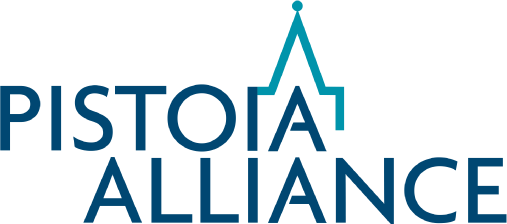Energy, Collaboration, Lab Data (and Alexa)
For our 2018 European conference we ran our second President’s Series hackathon to show how intensive collaboration can develop new solutions to industry problems.
In under 2 days the teams delivered prototypes and learnings in the areas of the Internet of (Laboratory) Things & AI, developing efficient ways of bringing smart technologies (and not so smart) equipment into the laboratory and demonstrating novel ways to use Pistoia Alliance’s own Chemical Safety Library data to improve laboratory safety.
Here’s a snapshot of the event:
In just a day and a half 7 teams tackled challenges based on our strategic themes of interest and from our project portfolio. We set three challenges:
- Predicting Lab instrument failure from Internet of (Laboratory) Things
- Integrate smart technology into laboratory process
- Improve lab safety with Pistoia Alliance’s Chemical Safety Library dataset
Congratulations to team “Let it go” for winning the hackathon, with their work on the Shire and Tetrascience IOT laboratory instrument sensor data. They impressed their judges with their insight and feedback on the challenges faced if we are to be successful in bringing the Internet of Things into the scientific laboratory. The team were:
- Beeta Balalimood, Mood Biopharma Consulting
- Daniel Brock, GSK
- Alex Brown, GSK
- Andrew Conkie, Red Star Consulting
Achievements and learnings:
What did they achieve at the event and what happens next:
Challenge 1: Machine Learning – Predicting lab instrument failure:
Using the Tetrascience and Shire lab instrument sensor data, the teams performed early baselining efforts to understand the normal data patterns of the refrigerators and freezers with the aim of using that to identify any outages. Their initial work, given the limited time, did not deliver a new model but their early insights made it clear that for long term success any sensor infrastructure will need to understand, capture and provide context, namely:
- Context / domain understanding of the systems (the users input)
- Contextual sensor data: for example not just the temperature and power data from a freezer but a door sensor to know when the freezer / fridge door is open or closed
- Contextual usage information: time related information, when was there a service of the instrument or event
Challenge 2: Integrating smart tech and instruments into the laboratory:
Two teams took on the challenge of integrating laboratory equipment, the first used the SiLA libraries to integrate a simple lab process from barcode scanner to multidrop liquid dispenser to analyse and receive LC results. The simplicity of the SilA interface allowed all these pieces of kit to be integrated into a workflow in less than 7 hours of work!
The other team built a demo of a voice activated, hands free laboratory notebook using Google chrome’s voice recognition software. They built a nice demo of controlling and recording the data from a laboratory balance purely by voice control showing with the right skillsets in your team, new innovative solutions with established off the shelf tech can move laboratory processes forward.
Challenge 3: Chemical Safety Library (CSL) Use Cases
Teams had access to our very own Chemical Safety Library data alongside datasets from Merck’s Material Safety Data Sheets and Pubchem. They integrated these with the Amazon Echo speaker and the IOT AWS smart button. We had prototypes for:
- Asking about hazard data for a particular compound or reaction
- Recording safety incidents:
- Immediate logging of incident severity via Amazon smart button
- Voice logging of a safety incident through Amazon Alexa
- New incident reporting form to link to one of the recorded incident logs
This was all in the space of a day and a half. Here’s a quick video of one of the Amazon Alexa prototypes:
What happens next? Collaboration!
In terms of the hackers:
Already one of our member companies has reached out to Shire and Tetrascience to see if there’s further collaboration on their datasets that can be done.
The University of Southampton team intend to further develop their Chemical Safety Library ideas with Alexa and more. Pistoia Alliance’s Chemical Safety Library team will visit them in the near future to follow their progress. We will keep you posted on this.
As for Pistoia Alliance, the next steps for us are the strategic Communities of Interest in AI and the Lab of the Future, you can find out more about and join them as they move from the discussion phase through to identifying the next Pistoia Alliance collaborative projects for the benefit of the industry.
- Join the Lab of the Future Community of Interest
- Join the Artificial Intelligence Community of Interest
Thank you to our supporters!
None of this would have been possible without our supporting partners:
![]() For supplying access to Pipeline Pilot and mentorship to the hackers, find out more about their products here.
For supplying access to Pipeline Pilot and mentorship to the hackers, find out more about their products here.
For supplying glassware and labcoats to get the hackers in the laboratory mood! For providing access to the material Safety data sheets around the Chemical Safety Library challenge, find our more about Merck’s products here
For bringing the lab equipment for the challenge and supporting the hackers as they developed their protoypes. Find out more about SiLA here.
For providing the laboratory sensor data for the Predicting Lab Instrument failure sensor data.
For access to their data and helping bring the CSL data into PubChem. Find out more here about PubChem
For supplying glassware and labcoats to get the hackers in the laboratory mood! Find our more about VWR’s products here
If you’d liek to know more about this hackathon or discuss ideas for future innovation focused events, please contact David Proudlock or one of the Pistoia Alliance team





